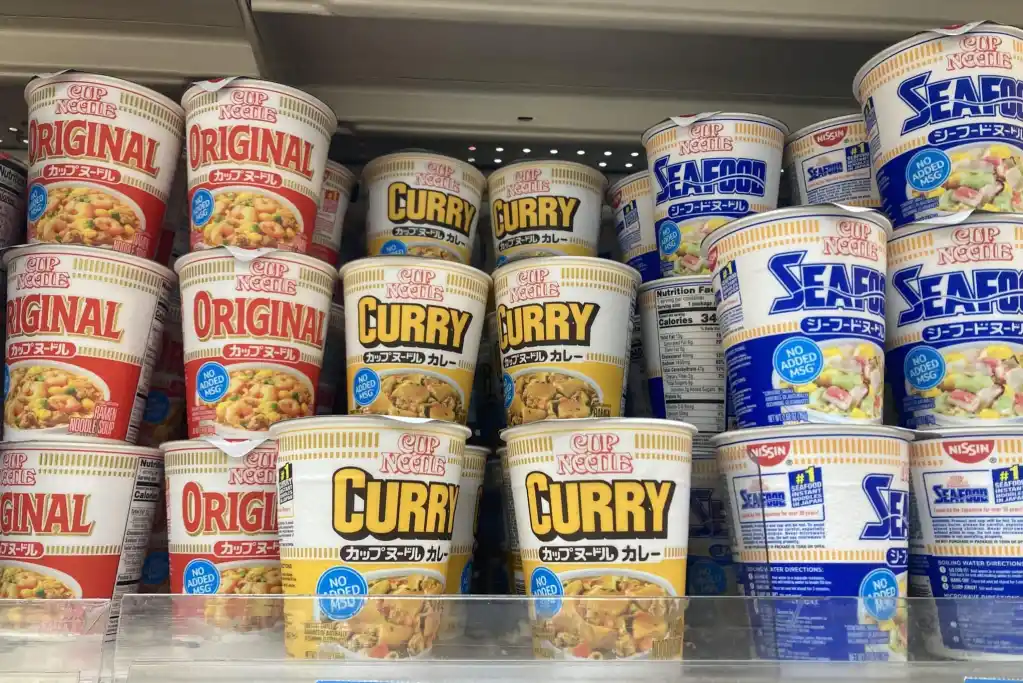When people think of Japanese food, noodles are probably high on the list. From instant ramen to yakisoba to somen, noodles make up a huge part of Japanese food culture.
If you want to know more about the many different kinds of Japanese noodles, and where you can get them, read on.
Japanese Noodle Basics

Japan didn’t invent the noodle, but many noodle dishes are native Japanese creations.
The first noodles were made in China, probably during China’s Eastern Han dynasty (25-220). It was likely during Japan’s Heian period (794–1185) that the Chinese introduced noodles to Japan. And Japanese chefs have been experimenting with noodle recipes ever since.
Surprisingly, ramen is a relatively recent addition to the Japanese menu. It arrived from China during the Meiji era (1868-1912). Instant ramen noodles were invented by Momofuku Ando in 1958.
Of course, not all noodles are alike. Noodles can be differentiated by what they are made of — wheat, buckwheat, rice, and egg are common varieties. Different kinds of noodles can be thick or thin, flat or round, short or long, etc.
List of Major Types of Japanese Noodles
- Ramen
- Yakisoba
- Udon
- Soba
- Somen
1. Ramen

Any discussion of Japanese noodles has to start with ramen, probably the most common and well-known variety. Ramen noodles are made from wheat, but gluten-free varieties do exist.
Ramen has Chinese roots, but Japanese chefs added local ingredients, such as nori (dried seaweed), and kamaboko (processed fish-paste cake).
Depending upon where you live, you may be able to find an authentic ramen restaurant in your area. If not, there’s always instant noodles.
Translating a Ramen Restaurant Menu
There are many varieties of ramen. But if you go to a ramen restaurant, you will likely find:
- Tonkotsu — Any ramen made with pork bone broth
- Shio — A pale or clear, salty ramen
- Shoyu — Soy sauce-flavored broth
- Miso — Ramen with a thick miso broth
- Curry/ Kare — Ramen with curry flavoring
- Tsukemen — A variation where ramen noodles are served separately, and dipped into the soup/ sauce/ broth.
In addition to the noodles and broth, you will often have many toppings and ingredients to choose from, including chashu/ char siu (BBQ pork), tamago (egg), kamaboko, nori, wakame (green seaweed), corn, bean sprouts, etc.
1. Instant Ramen
These can range from cheap and salty noodles in a cup, to plastic bags of surprisingly good dried noodle blocks you have to cook in a pot. Some brands worth considering include:
Sapporo Ichiban — Sanyo Foods has sold this brand of instant noodles since 1966. Personally, I always preferred it over Nissin, and online taste tests would seem to agree. As with Nissin, it comes in a variety of flavors. However, the ones I could find had more of an emphasis on traditional miso, shio, and tonkotsu, rather than more exotic and spicy flavors.
Nissin — Since 1958, Nissin has been the original instant noodle company. Nissin makes both the cheap Cup Noodles, and the higher quality Top Ramen. Both come in a wide variety of both traditional and exotic flavors: beef, chicken, seafood, curry, shrimp, spicy shrimp, chili tomato, miso, etc. Some of these are only available in Japan or in the United States.
If you want Japanese varieties, an online seller like ZenPlus can come in handy.
Maruchan — Maruchan is a brand name for Toyo Suisan, which has made instant noodles since 1961. Maruchan seems to have really gone after the North American market with picante chicken, lime chili shrimp, and fire spicy beef flavors. (In fact, one Google autocomplete question asks “Is Maruchan Mexican?”)
Maruchan in Japan also offers such international flavors as sour cream and onion, tomato cream, and cream curry cheese.
Nongshim — Nongshim is from Seoul, not Japan. And technically, their noodles are Korean ramyun noodles. But a lot of people online swear by these noodles, especially the spicy Shin Black variety. The company started making ramyun in 1965.
2. Yakisoba

Yakisoba is the Japanese name for stir-fried noodles. Despite the name, yakisoba is not made from Japanese buckwheat soba. It’s actually made from ramen-style wheat noodles, also known as chuka soba.
It’s similar to Chinese chow mein, except that Japanese people add yakisoba sauce, which is made from worcestershire sauce. (Try adding worcestershire to chow mein!) You can also add native Japanese flavors such as aonori (green nori flakes) or pickled red sushi ginger to it.
Yakisoba is often found at Japanese festivals, because it’s a crowd pleaser that’s relatively easy to make.
A few instant ramen companies also make instant yakisoba. Brands include:
- Myojo Ippei-chan
- Nissin UFO
- Sapporo Ichiban
- Maruchan
As with ramen, these come in multiple flavors.
Find instant yakisoba on Amazon.
3. Udon
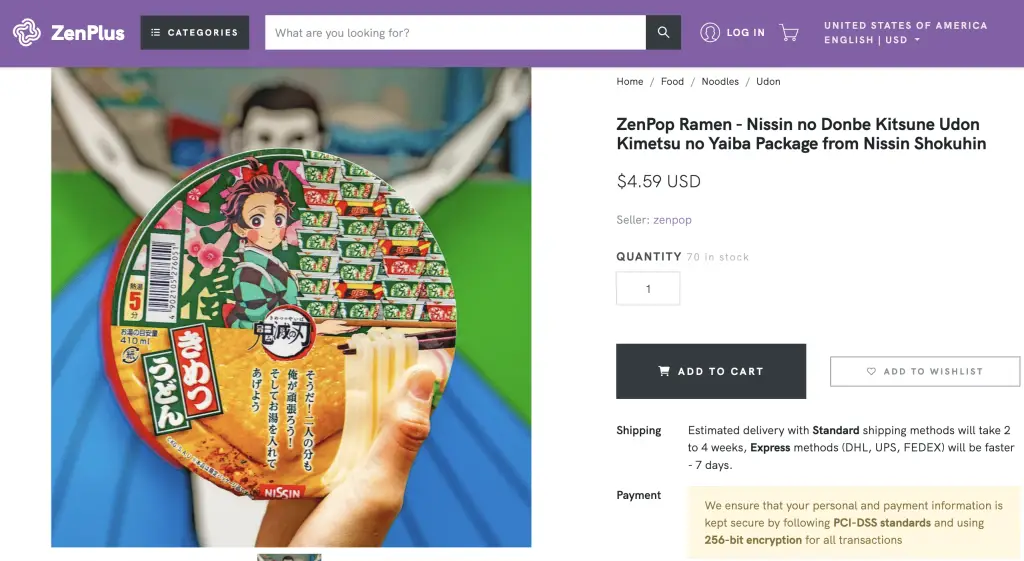
Udon is similar to ramen in that both are wheat noodle dishes typically served as hot soup. However, udon noodles are thicker than ramen. Udon broth also tends to be lighter than ramen broth. Udon varieties include (but are not limited to):
- Kitsune udon — Contains deep-fried tofu slices (similar to inari sushi)
- Tanuki udon — Contains tempura batter pieces
- Wakame udon — Contains green seaweed
- Kake udon — Contains green onion, and possibly kamaboko
- Curry udon — A curry-flavored udon
- Nabeyaki udon — A type of hot pot
In addition, udon can also be added to sukiyaki, or shabu-shabu hot pots.
Zaru udon is a cold udon dish, served on a tray (i.e., not soup) with a dipping sauce called tsuyu.
Some varieties of instant udon also exist.
4. Soba
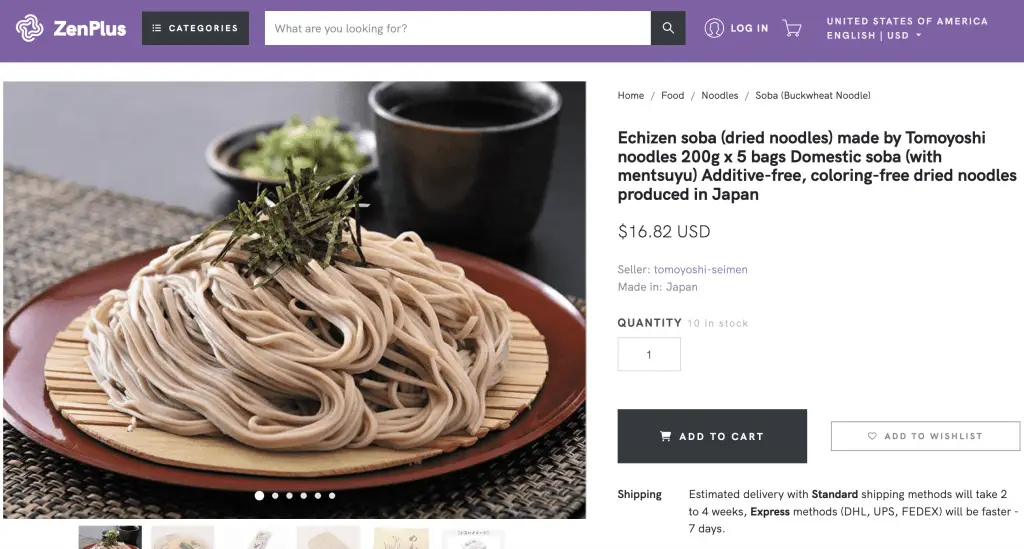
Soba noodles are made of buckwheat. They are typically served cold or chilled, such as in zaru soba. Zaru soba is served with tsuyu dipping sauce, and topped with nori.
Soba can also be served as hot soup, with a tsuyu-like broth. Soba can also be used as a substitute for ramen, if you are on a high-fiber or gluten-free diet. Buckwheat contains no gluten.
Although instant soba is not common, you can buy dried soba noodles and bottles of tsuyu online.
Find soba on Amazon. Also, find bottles of tsuyu at ZenPlus’ Japan Marketplace.
5. Somen
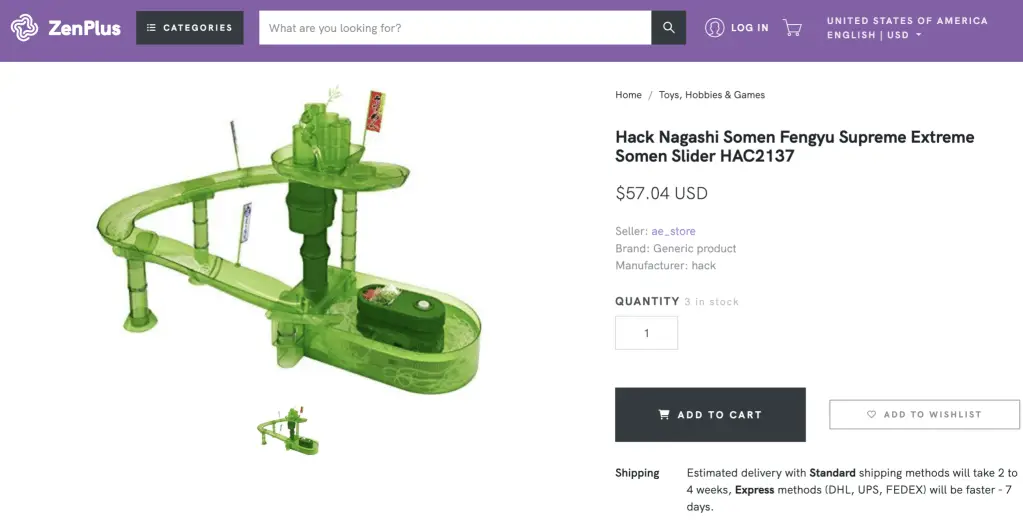
Somen is a thin wheat noodle. It can be served cold, in a manner similar to zaru soba. If you’re in Japan during the summer, you may encounter nagashi somen, or flowing somen noodles. As the name implies, the noodles flow down a flume or chute, and must be “caught” with chopsticks.
ZenPlus has both dried somen noodles, and somen sliders, if you want to replicate the nagashi somen experience at home.
Japanese/ Western Noodle Alternatives
Of course, the wide world of Japanese noodles can’t be limited to these five categories. But these are the most common varieties. Here are some other types to watch for:
Japanese Spaghetti
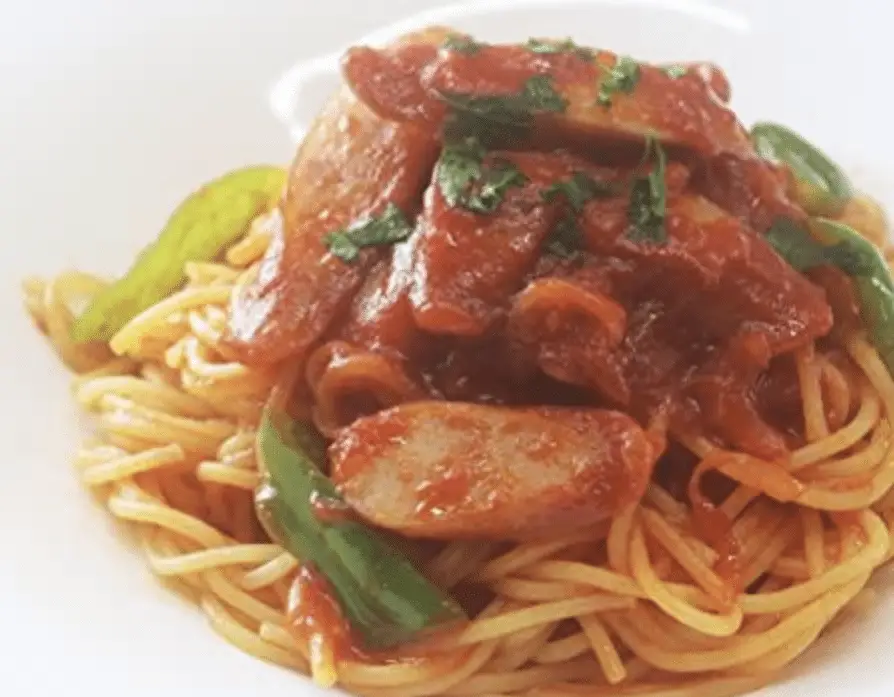
Japan embraced Italian cooking during the postwar Showa era, inventing or improving such dishes as:
- Spaghetti Napolitan — Pasta with a tomato paste or ketchup-based sauce, with garlic, onions, green peppers, etc. Often served with Japanese-style mini vienna sausages.
- Curry spaghetti — Essentially, curry sauce over spaghetti, instead of rice. Also served with katsu.
- Black squid ink spaghetti — It was invented in Naples, but this seafood pasta appealed to Japanese taste buds.
Japanese-Hawaiian Noodles
If you visit Hawaii, you might want to try these variations on traditional Japanese noodles:
- Saimin — An immigrant version of ramen, made with a mixture of spam, kamaboko, egg, chashu pork, etc. Wontons can also be added.
- Somen salad — A salad made with somen noodles; topped with egg, kamaboko, crab, ham, spam, cucumber, cabbage, and/ or sprouts; and served with a soy/ vinegar/ sesame dressing.
Conclusion
I hope this helps you understand and appreciate the Japanese noodle.


